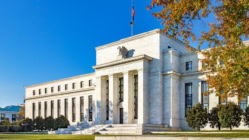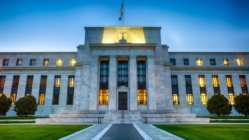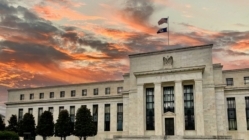To be in the top 10% of the wealthiest Americans, you only need a net worth of $854,00, per Yahoo Finance (this is pretty much everyone who owns a home in CA).
The top 5% have net worths of $1 million and the top 2% have net worths of $2.5 million.
To be part of the famous and “evil” “top 1%,” you only need a net worth of $5.8 million.
My point is that not only are most of the readers of this blog solidly in the top 10%, but almost everyone they know also resides in a top wealth tier.
Smart readers give me feedback all the time, telling me that the economy seems pretty strong to them – and that is because the economy IS very strong for them.
I know many of those readers personally, and not only are they top “1%-ers,” but they own substantial assets (stock and real estate) that have appreciated massively over the last ten years, especially since COVID.
What most people miss is how much of the bottom 90% is struggling right now.
Record Number of 401K Hardship Withdrawals
Nick Gerli shared this post on X recently, highlighting some of the obvious signs of struggle.
A record number of Americans are taking 401k hardship withdrawals right now (despite the penalties and taxes), and 40% of those are just to make mortgage payments.
Gerli also points out how savings rates are plummeting and how credit card delinquencies are surging (the “canary in the coal mine”).
Gerli unfortunately then segues into what this entails for the housing market, but I think he misses the true supply shortages and how much lower rates will spur demand.
Cool Employment Market
Stephanie Pomboy reminds us in this post how soft the employment market really is, as the U.S. economy has shed almost 2 million full-time jobs over the last three months alone – a number we have not seen since the 2008 meltdown.
Other pundits point out how layoffs are surging but not accounted for because many employees are not filing for meager unemployment benefits; they’re instead turning to gig jobs like Uber and DoorDash.
There are other anecdotes all over X too, such as Adam Taggart pointing out how more and more consumers are turning to Dollar Store shopping, or how “buy now, pay later” plans are more popular than ever, or how inflation has far outpaced wage gains in many sectors.
What Ken McElroy’s 10,000 Apartment Tenants Tell Us about the Economy
Famed real estate investor Ken McElroy recently shared this video on YouTube: What My 10,000 Tenants Tell Us About The Economy. The number of evictions from non-paying tenants has increased by a factor of four! In addition, far more of his tenants have multiple jobs and/or roommates now, and many of them are using “buy now, pay later” firms to just pay rent.
I received a text last week from a friend who lives in a very wealthy Walnut Creek, CA neighborhood. She asked me how so many of her neighbors can afford to do $1 million remodels if the economy is in or near a recession. I said it is because they are asset-owning “haves,” riding out a euphoric stock market and real estate boom. They are far removed from the millions of Americans (the “have-nots”) who do not own significant assets and who are suffering right now.
So, while much of the American economy is and can be driven by the wealth of the top 10%, our overall economy still depends on the consumption of the bottom 90% (70% of our economy, as a reminder, is consumer spending).
The full impact of the bottom 90%’s struggles has yet to be reflected in our economic reports (or in the news), but … it is just a matter of time.
Sign up to receive our blog daily
























